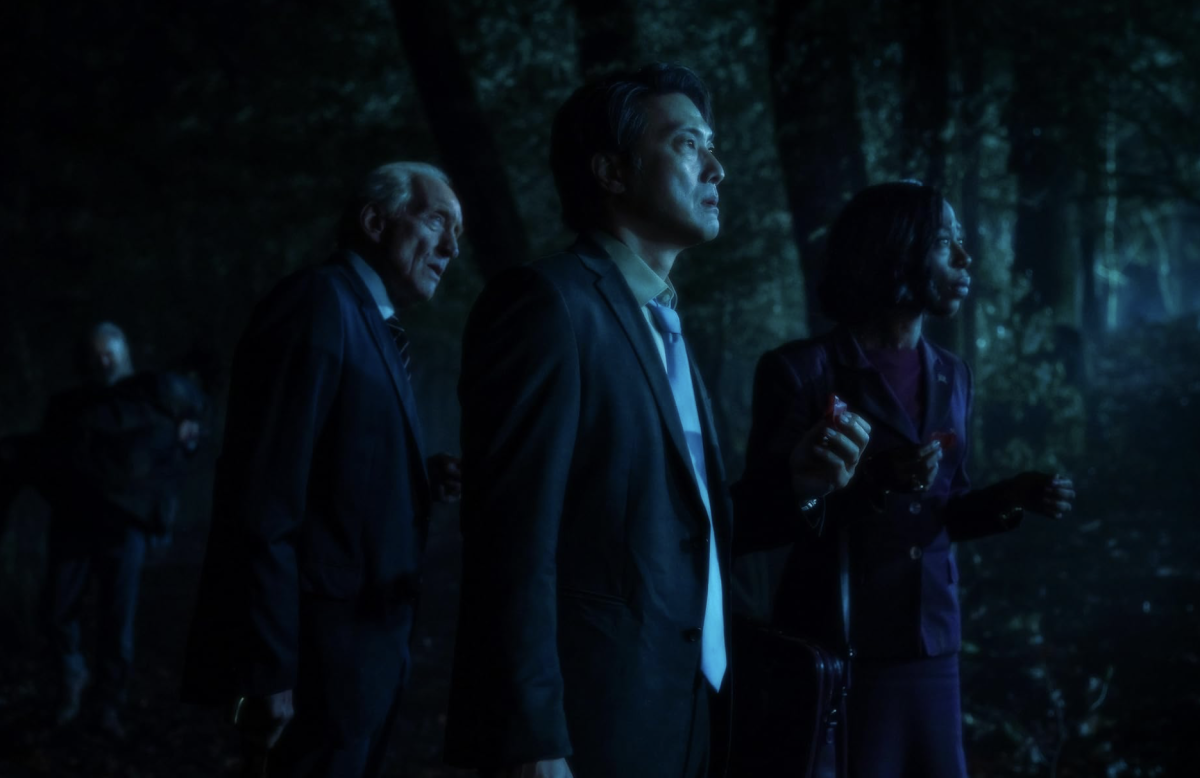A narcoleptic American who, inexplicably, has a thick British accent. A sensitive Canadian with a ridiculous man bun and an exaggerated libido. A chubby, rambling Frenchman writing a book on pagan burial traditions. A tiny Italian who, in every situation imaginable, offers his companions slices of salami. These aren’t quirky, 20-something sitcom characters struggling to get by, they’re the leaders of the free world in “Rumours.”
The third feature-length collaboration between director Guy Maddin and up-and-coming filmmakers Evan and Galen Johnson takes a fascinating premise past its breaking point and back again through the setting of the annual G7 summit, a meeting between the leaders of the world’s seven most influential liberal democracies. “Rumors” depicts their attempt to draft a joint statement addressing the unexplained “present crisis.”
As the team makes small talk over wine and brainstorms ideas for the statement, they take notice of the creeping silence around them and realize all their staff has disappeared. What ensues is a second act that sees the leaders wandering through the forest while simultaneously finishing the joint statement.
As the members of the G7 bicker, the audience is first comforted by the thought that world leaders are human, too. It’s the scary second wave of this realization when the consequences of their distraction begin to set in. The film pokes fun at the comedic idea that society in all different forms leads the world through everything from a walk in the woods to a geopolitical crisis. This brilliant setup puts “Rumours” in a position to be spectacular — but the script isn’t strong enough to sustain the momentum.
The filmmakers pile on new ideas, turning what began as an airtight script into a bloated mess. They introduce a new character who communicates in a suspicious alien language — spoiler alert, it was Swedish — only to kill her off almost immediately. There are also unexplainable science fiction elements. The Canadian prime minister suddenly discovers a massive brain in the middle of the forest, while mummified bodies from a gravesite end up coming to life. The second act, and most of the third, is marred by the film’s confusion on what it is, or more appropriately, what it’s trying to be — is it a political satire? A horror film? An exercise in arthouse surrealism? The inability to answer these questions results in the film oftentimes feeling overdone, meandering and directionless.
The darkness underlying “Rumours” is that, between the laughs and tedium, there is a bleak, harsh and ugly reality behind the on-screen, but also in front of it. Viewers feel voyeuristic watching the film crash and burn despite not being able to look away. We watch the inept leaders in “Rumours” on the silver screen and observe the same dangerously incompetent leadership on our phone screens.
The medium is the message. That’s the genius of “Rumours”, the genius that makes the slog worthwhile. The narrative plays its hand close until the finale, the grand reveal when the G7, at last, read the joint statement they’ve spent the whole film working on and it turns out to be an incoherent hodgepodge of political buzzwords and erotica. The speech is delivered to an empty field — none of the characters are listening, so why give the speech at all? But the audience is listening, and the speech is the ending of a dragged-out 118-minute-long joke.
We’re the punchline.
Contact Omar Drissi at [email protected].























































































































































